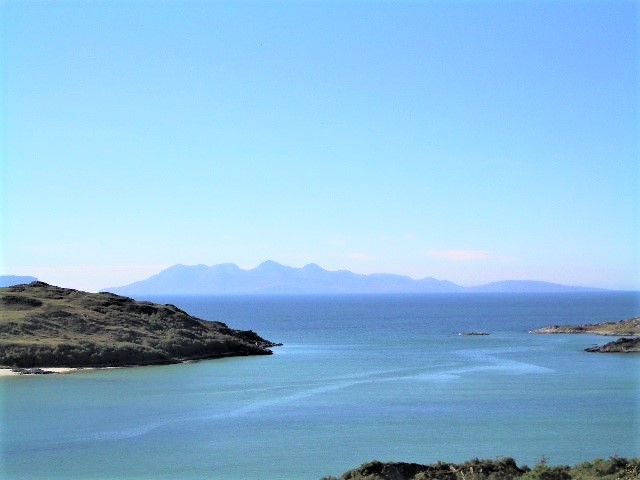
Grove Koger
Hoping to free himself of distractions, the great British composer Arnold Bax made his first visit to the small village of Morar in western Scotland sometime in the winter of 1928-29, and it was there that he seems to have completed the orchestration of his ravishing Third Symphony. He wrote to his close friend Harriet Cohen in February 1929 that “this place is most enchanting when it is fine as it was this afternoon. I went down to the loch, and the silence and peace simply flooded me all through.… There was not a sound except the distant cry of a sea-gull, and now and then a whiff of peat smoke came long, and made [the] magic more wonderful.”

Subsequently, says biographer Lewis Foreman, Bax “started making a regular annual pilgrimage to the west coast of Scotland in winter-time, taking the train on the wild west-coast line” and staying in an unheated room in what was then the Station Hotel and is now the Morar Hotel. He wrote part of a sinfonia concertante called Winter Legends there, dedicating the manuscript to Cohen. He was often accompanied by another close friend, Mary Gleaves, and ultimately orchestrated all of his subsequent symphonies there. “It was wonderful in the north in spite of a mantle of cloud all the time,” he wrote of one visit, adding that there had been “only two sunny days in three weeks.”

Morar is situated between Loch Morar and the rugged Atlantic coastline, and its broad beaches are known as the White Sands of Morar. The loch itself is the fifth largest in Scotland, and, at 1,017 feet, the deepest. For what it’s worth, a number of witnesses have reported sighting a monster or “water horse” known as Morag in its waters.
Maggie and I spent several days in Morar in September 2006, and, since I’ve been fascinated by Bax’s music for decades, we made a point of staying in the Morar Hotel. A small sign in one of the upstairs hallways identifies the location of Bax’s customary room, although the space has been divided up since his time. A genial bar was tucked into one corner of the lobby, and although the windows of our room were frustratingly small (the structure was built in 1902), I’m glad to say that the room itself was heated. In any case, the hotel’s dining room offered a stunning view out over the Silver Sands and the Inner Hebrides islands of Eigg and Rùm, and one evening I split a steak with Maggie that was the best I’ve ever tasted.

Another day we took a small boat trip to Eigg and Rùm and another island named Muck, enjoying yet more robust food and drink and gaining a wholehearted respect for the region’s bracing weather and its frigid seas.
□□□
Lewis Foreman’s remarks are taken from the third edition of his authoritative biography Bax: A Composer and His Times (Woodbridge, Suffolk: Boydell Press, 2007). And if you’d like to learn more about Morar’s water horse, read The Search for Morag, by Elizabeth Montgomery Campbell and David Solomon (New York: Walker, 1973). An epigraph on the book’s title page quotes an old Scottish lay as running “Morag, harbinger of Death, / Giant swimmer in deep-water Morar, / The loch that has no bottom … / There it is that Morag the monster lives.” Maggie and I paid a visit to the western end of the loch one afternoon, but I’m sorry to say that Morag wasn’t disporting himself (or herself) within view.
□□□
You can listen to a recording of Harriet Cohen and the BBC Symphony Orchestra playing Winter Legends at https://www.youtube.com/watch?v=Teiv6ZvJkr4. And there’s a fine modern performance of Bax’s Third Symphony by the BBC Philharmonic under the baton of one of his greatest interpreters, Vernon Handley, at https://www.youtube.com/watch?v=YrEFRhA05T4.
□□□
The top image on today’s post is Maggie’s photograph of the western end of Loch Morar. The Elliot & Fry portrait of Arnold Bax dates from 1926 and is reproduced courtesy of the National Portrait Gallery under a Creative Commons License (https://creativecommons.org/licenses/by-nc-nd/3.0/legalcode). The third and fourth images are Maggie’s photographs of the Morar Hotel and the view out to sea from Morar. I think that’s Rùm on the horizon.